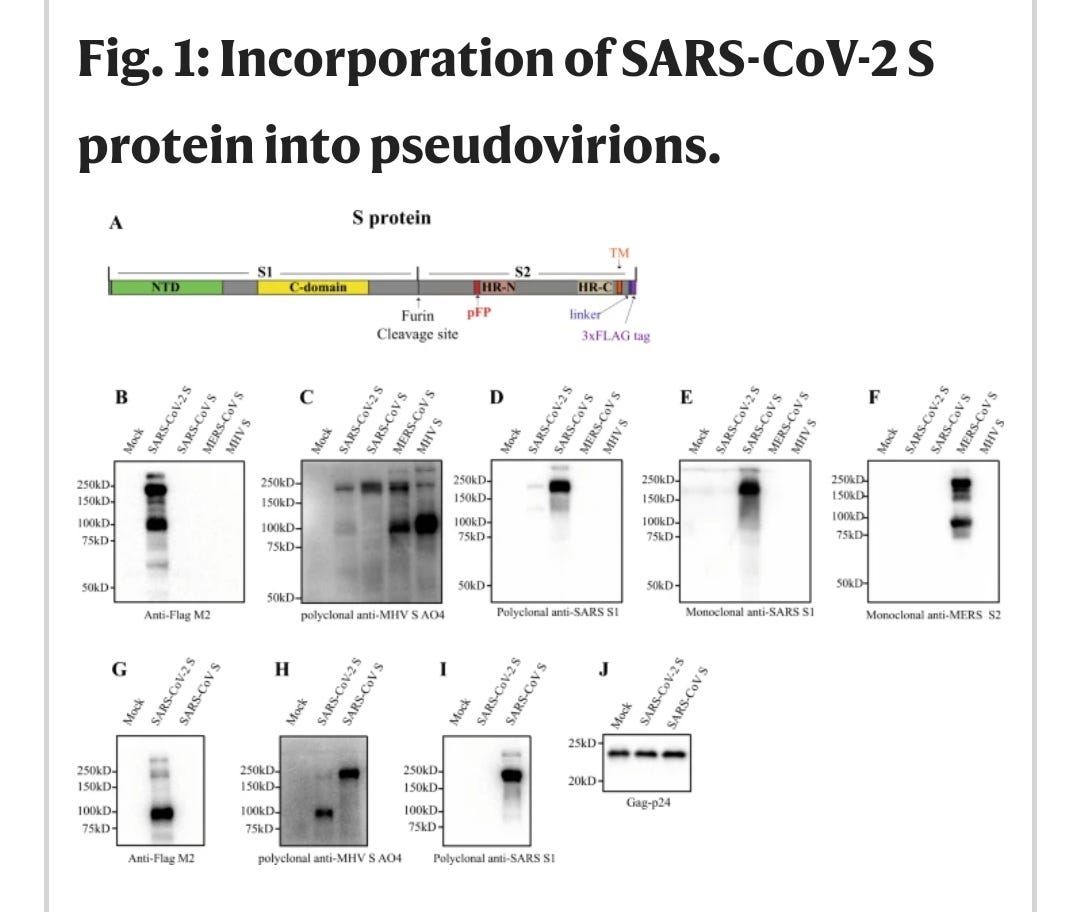Update on The University of Queensland COVID-19 vaccine. "..trial did not give trial participants HIV", just a neurotoxic glycoprotein
11 Dec 2020
Any extracts used in the following article are for non commercial research and educational purposes only and may be subject to copyright from their respective owners.
Thanks go to “Reuters Fact Check” for providing the link:
"Fact check: An Australian vaccine trial did not give trial participants HIV"
https://www.reuters.com/article/uk-factcheck-hiv-idUSKBN28R2WT
I wouldn’t let these clowns dispense aspirin, let alone design fast tracked vaccines.
“The Phase 1 data also showed the generation of antibodies directed towards fragments of a protein (gp41), which is a component used to stabilise the vaccine. Trial participants were fully informed of the possibility of a partial immune response to this component, but it was unexpected that the levels induced would interfere with certain HIV tests.
There is no possibility the vaccine causes infection, and routine follow up tests confirmed there is no HIV virus present.
With advice from experts, CSL and UQ have worked through the implications that this issue presents to rolling out the vaccine into broad populations. It is generally agreed that significant changes would need to be made to well-established HIV testing procedures in the healthcare setting to accommodate rollout of this vaccine. Therefore, CSL and the Australian Government have agreed vaccine development will not proceed to Phase 2/3 trials.
https://www.csl.com/news/2020/20201211-update-on-the-university-of-queensland-covid-19-vaccine
Interesting rapid response to the effect that antibody only HIV tests have long since been debunked as a diagnostic tool on their own due to cross reactivity from other antibodies. They don't tell you anything useful.
“The politics of AIDS in South Africa: beyond the controversies”
BMJ 2003
Rapid Response:
Re: Re: Re: Re: Request for Peter Flegg and Outstanding 'Perth Group'
'3rd generation assays' don't overcome the problem of the fact that antibodies are polyspecific. Antibodies cross react to even polished and scrubbed proteins (even assuming the origin of these proteins is known). The lack of a gold standard for the 'HIV' tests is critical. Antibodies directed against carbohydrate mannan structures (mycobacteria, fungi, semen [2,3,4]) are known to readily react to the 'HIV' tests as an example.
Peter Flegg wrote: "I would then request confirmation utilising assays that use different antigen targets. The scenario Tyler describes would not arise in practice."
Great. Therefore, do reactive bands of p24, p32, and p41 indicate infection by 'HIV'?
Dr. Flegg wrote: "In practice the issue is irrelevant, since with established HIV infection one usually sees more bands than you find at a LiveAid concert, and indeterminate reactions with only two or three bands are unusual. “
According to data presented in Lundberg et al.[5] when the US FDA criteria are used to interpret the HIV Western blot less than 50% of US AIDS patients are HIV positive, whereas 10% of persons not at risk of AIDS are also positive by the same criteria.”
More:
So what was the real reason for pulling the Australian trial, was it the gp41 toxicity?
The antibody problem raises more questions than it answers as spike S2 has homology to P24, GP41 and GP120.
This is dark stuff, P24 has been ported straight across from HIVs capsid to the spike protein. Here's the proof, at least as far as what specific antibodies are telling us, which don't lie:
What is p24 antigen?
"One distinctive HIV antigen is a viral protein called p24, a structural protein that makes up most of the HIV viral core, or 'capsid'. High levels of p24 are present in the blood serum of newly infected individuals during the short period between infection and seroconversion, making p24 antigen assays useful in diagnosing primary HIV infection."
https://www.aidsmap.com/about-hiv/faq/what-p24-antigen
Characterization of spike glycoprotein of SARS-CoV-2 on virus entry and its immune cross-reactivity with SARS-CoV (2020)
"j Polyclonal anti-Gag-p24 antibodies. uncleaved S protein, about 180 kDa; cleaved S protein, about 90 kDa.”
"...rabbit polyclonal against HIV-1 Gag-p24 antibody (11695-RP01) were purchased from Sino Biological Inc. (Beijing, China).”
https://www.nature.com/articles/s41467-020-15562-9
The SARS CoV-2 spike directed non-neutralizing polyclonal antibodies cross-react with Human immunodeficiency virus (HIV-1) gp41 (Dec. 2021)
https://www.sciencedirect.com/science/article/pii/S1567576921008237?via%3Dihub
Cros-reactivity of SARS-CoV-2 with HIV chemiluminescent assay leading to false-positive results (2020)
https://jcp.bmj.com/content/74/9/614#request-permissions
Pathology:
Accumulation of β-Amyloid Precursor Protein in Axons Correlates with CNS Expression of SIV gp41 (2002)
"In this study, a strong association (p = 0.005) was identified between elevated axonal β-APP levels and the amount of SIV gp41 present in white matter, implicating HIV/SIV gp41 as a mediator of axonal damage."
https://academic.oup.com/jnen/article/61/1/85/2916415
For those who don’t know, beta amyloid is associated with several degenerative neurological disorders:
Amyloid-β and Parkinson's disease (2018)
https://pubmed.ncbi.nlm.nih.gov/30377818/
Beta-amyloid 42 accumulation in the lumbar spinal cord motor neurons of amyotrophic lateral sclerosis patients (2004)
https://www.sciencedirect.com/science/article/abs/pii/S0969996105000276?via%3Dihub
Alzheimer’s Disease and the β-Amyloid Peptide (2010)
https://www.ncbi.nlm.nih.gov/pmc/articles/PMC2813509/
They knew this way back in 1999:
Mechanisms and Structural Determinants of HIV-1 Coat Protein, gp41-Induced Neurotoxicity (1999)
Abstract
Of the individuals with human immunodeficiency virus type 1 (HIV-1) infection, 20–30% will develop the neurological complication of HIV-associated dementia (HAD). The mechanisms underlying HAD are unknown; however, indirect immunologically mediated mechanisms are theorized to play a role. Recently, the HIV-1 coat protein gp41 has been implicated as a major mediator of HAD through induction of neurocytokines and subsequent neuronal cell death. Using primary mixed cortical cultures from neuronal nitric oxide synthase (NOS) null (nNOS−/−) mice and immunological NOS null (iNOS−/−) mice, we establish iNOS-derived NO as a major mediator of gp41 neurotoxicity. Neurotoxicity elicited by gp41 is markedly attenuated in iNOS−/− cultures compared with wild-type and nNOS−/− cultures. The NOS inhibitor l-nitroarginine methyl ester is neuroprotective in wild-type and nNOS−/− cultures, confirming the role of iNOS-derived NO in gp41 neurotoxicity. Confirming that iNOS−/− cultures lack iNOS, gp41 did not induce iNOS in iNOS−/− cultures, but it markedly induced iNOS in wild-type and nNOS−/− cultures. We elucidate the region of gp41 that is critical for iNOS induction and neuronal cell death by monitoring iNOS induction with overlapping peptides spanning gp41. We show that the N-terminal region of gp41, which we designate as the neurotoxic domain, induces iNOS protein activity and iNOS-dependent neurotoxicity at picomolar concentrations in a manner similar to recombinant gp41 protein. Our experiments suggest that gp41 is eliciting the induction of iNOS through potential cell surface receptors or binding sites because the induction of iNOS is dose dependent and saturable and occurs at physiologically relevant concentrations. These data confirm that the induction of iNOS by gp41 and the production of NO are primary mediators of neuronal damage and identify a neurotoxic domain of gp41 that may play an important role in HAD.
Keywords: HIV-1, HIV-associated dementia, neurotoxicity, gp41, immunological nitric oxide synthase, nitric oxide
https://www.ncbi.nlm.nih.gov/pmc/articles/PMC6782354/
“Off to Moderna we go”






